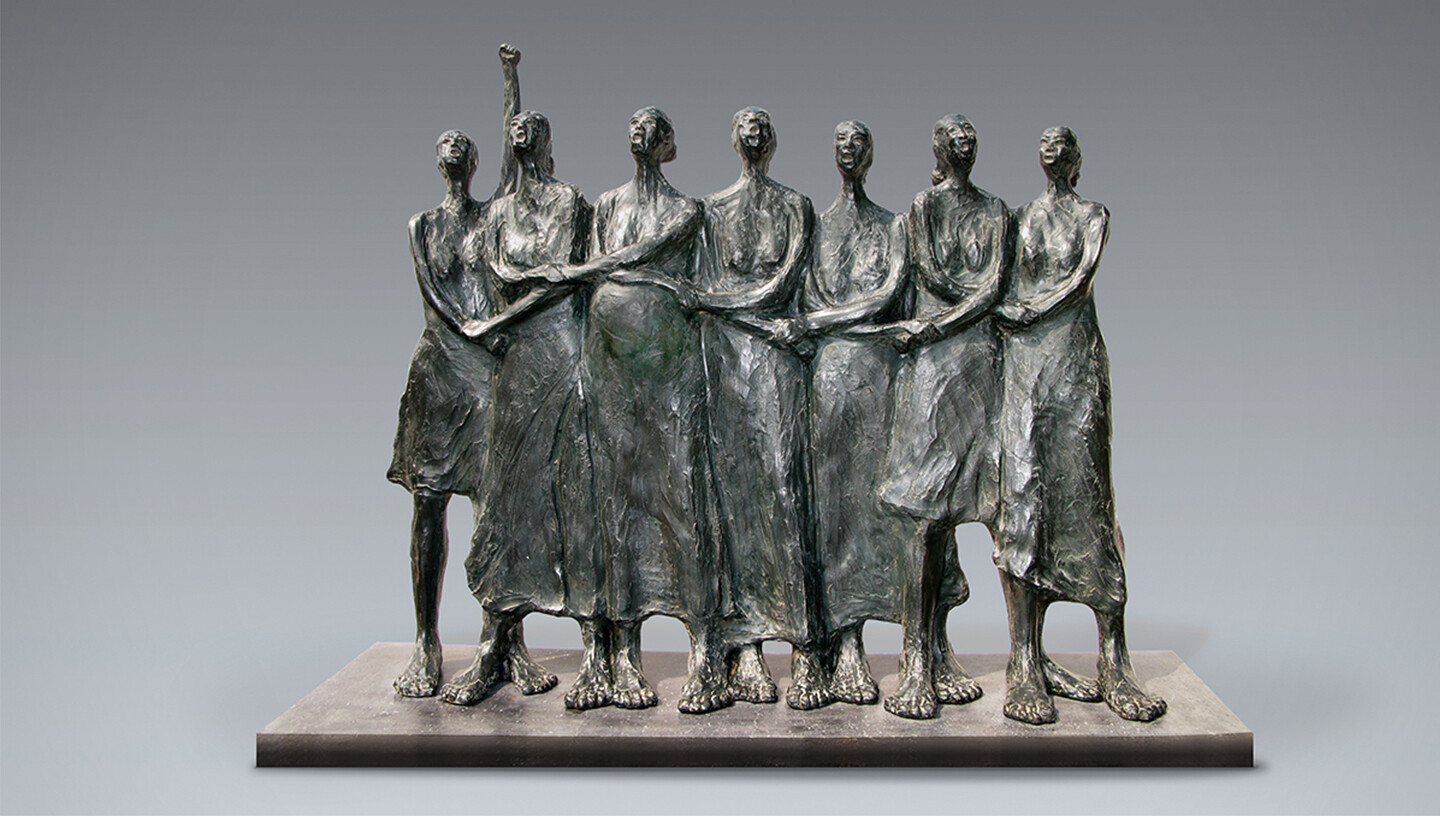July 30, 2021–July 3, 2022
Collecting Entanglements and Embodied Histories is a curatorial collaboration that began with looking at the collections of Galeri Nasional Indonesia, MAIIAM Contemporary Art Museum, Nationalgalerie Berlin, and Singapore Art Museum. It was initiated by Goethe-Institut.
Aiming to trace stories, counter-histories and absent histories whose spirits populate the present and seek new narratives, Collecting Entanglements and Embodied Histories questions how these interwoven histories within nation-building processes, individual identity formation and their embodiment are reflected in artistic works and their exhibition history.
Its process of discussion and exchange culminates in four related exhibitions in Chiang Mai, Singapore, Berlin and Jakarta, curated by Anna-Catharina Gebbers, Grace Samboh, Gridthiya Gaweewong and June Yap. The curatorial team jointly conceives the project, with each curator leading an exhibition that explores a distinctive narrative and displays works from the collections of the four institutions.
Between now and March 2022, audience can engage in monthly public programs hosted by the curators, broadcasted on YouTube and Facebook every last Thursday of the month at 5pm Jakarta and Bangkok (UTC+7) / 6pm Singapore (UTC+8) / 12pm Berlin (UTC+2).
To Conjure Something Out of Nothing is an online reading group on archives with Grace Samboh (Indonesia), Lisabona Rahman (Indonesia), Michelle Wong (Hong Kong), and Shabbir Hussain Mustafa (Singapore). Access: Goethe-Institut Indonesien YouTube and Facebook, Galeri Nasional Indonesia Facebook, Goethe-Institut Singapore, Goethe-Institut Thailand, Hamburger Bahnhof – Museum für Gegenwart – Berlin, MAIIAM Contemporary Art Museum, Singapore Art Museum.
ERRATA, Chiang Mai, MAIIAM Contemporary Art Museum (July 30–November 1, 2021)
ERRATA is the first chapter of the exhibition series. It resonates with an exhibition history in Singapore by Koh Nguang How, which fixed the errors in the first exhibition catalogue of Singapore Art Museum in 1996. In this context, errata refers to the MAIIAM Contemporary Art Museum collection as the manifestation of errata in Thailand’s public and some private collections. The performative action of collecting contemporary art, particularly socially engaged works created since the early 1990s, has continued to the present, especially from the period after the 2014 Coup. ERRATA discursively contemplates and unpacks the complexity of micro-narrative artistic practices such as performance art, media-based works from suppressed voices, particularly women, who use their bodies and cameras to encapsulate and embody the entangled histories.
The Gift, Singapore, presented by Singapore Art Museum (August 20–November 7, 2021)
The Gift examines the subtle and intangible aspects of exchange, influence and trace through the subject of the gift. From social act to cultural performance and philosophical concept, the apparently ordinary act of gifting is in fact ambivalent and paradoxical, and consequently a source of fascination, vexation and debate. Unlike an economic transaction, the gift is more than the object of its exchange. It is an embodiment of an expansiveness of spirit by the giver that often obliges its receiver, and may even unintentionally become an onerous burden. Drawing upon aesthetic and felt connections across collections, the exhibition presents the complexities and significance of our intertwined histories. After all a gift is only a gift when it is entangled.
Nation, Narration, Narcosis, Berlin, Hamburger Bahnhof – Museum für Gegenwart – Berlin (November 28, 2021–July 3, 2022)
The exhibition explores the relationship of critical art forms such as performance art, time-based media art and installation in particular, to political protests, historical traumas and social narratives. “Nation, Narration, Narcosis” conceives climate and environment not only ecologically but also socially. In this context, the show poses questions about the often brutal processes of nation-building, the role of art in the associated narrations and which hegemonic and alternative forms of community and narratives are conceivable and are reflected in works of art. The concept of nation contained in the name “National Gallery” encounters other ideas and forms of kinship, solidarity and individuality, starting from Beuys’ concept of social sculpture.
The Acquiescent Allies, Jakarta, Galeri Nasional Indonesia (January 28–February 28, 2022 – date TBC)
Around the time of the Asia-Africa Conference (Bandung, 1955), geopolitically-oriented exhibitions started brewing all over the world. Among these were the Sao Paulo Biennale (f. 1951), Alexandria Biennale (f. 1955), and Biennial of Graphic Arts (Ljubljana, f. 1955). By 1981, traveling exhibitions between ASEAN member countries began taking place. At this time there was also a surge of non-Western-leaning international exhibitions, such as the Fukuoka Asian Art Triennale (f. 1979), Asian Art Biennale (Bangladesh, f. 1981), Australia and the Regions Exchange (f. 1983), and Havana Biennale (f. 1984).
The scope of the Non-Aligned Movement (f. 1961) was perhaps too big for an exhibitionary effort. To many surprises, in 1995, Contemporary Art from Non-Aligned Countries exhibition was held in Jakarta. At least 38 countries participate by sending their artists’ works. Many of them were then donated into the collection of Galeri Nasional Indonesia. What can we learn from these exchanges? Were they merely symbolic gestures of alliances? What was the relationship among the artists? Were there actual exchanges among artists?




